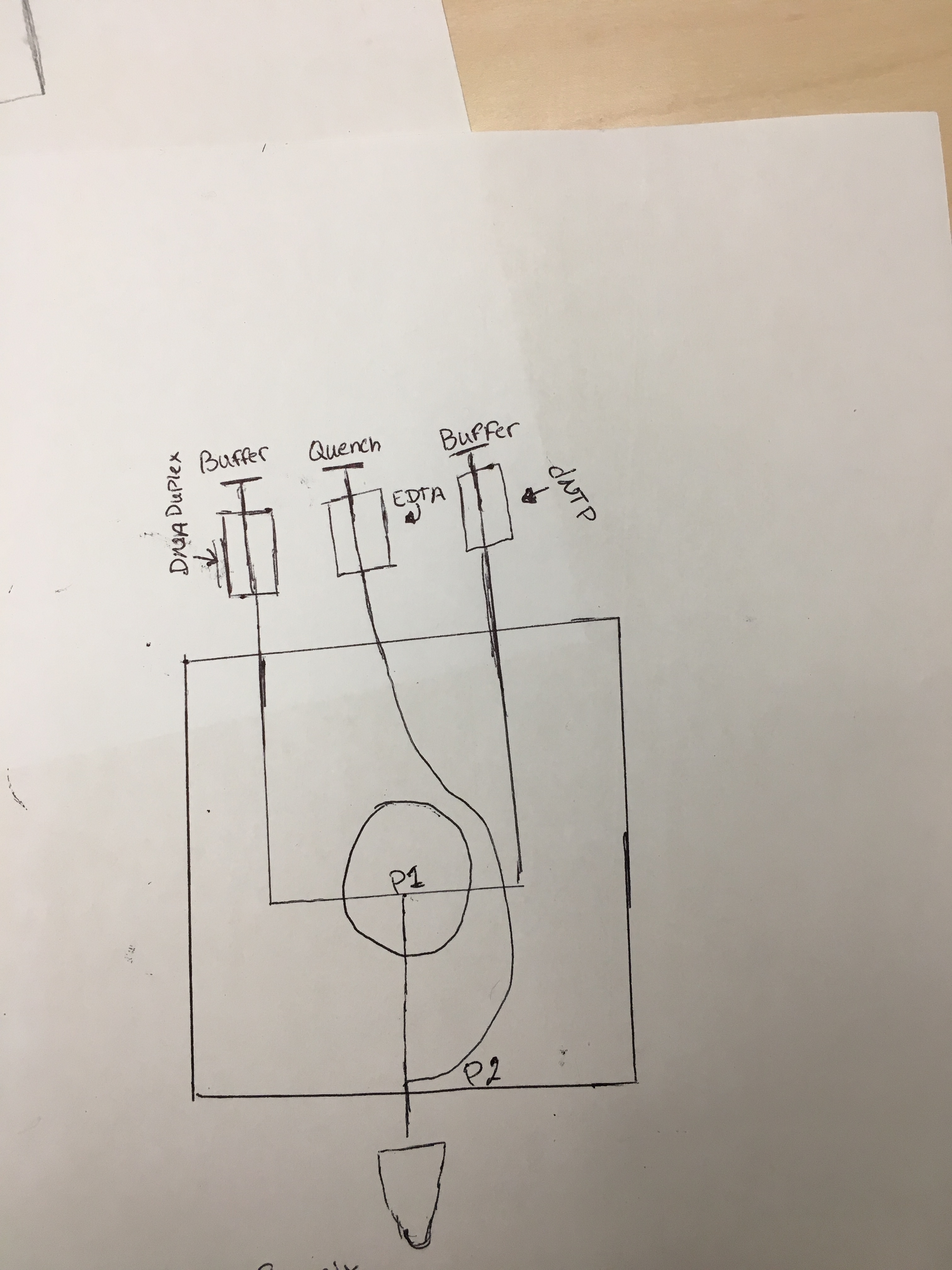Joy Y. Feng, Allison A. Johnson, Kenneth A. Johnson and Karen S. Anderson(2001)
Insights into the Molecular Mechanism of Mitochondrial Toxicity by
AIDS Drugs*
The Journal of Biological Chemistry Vol.276,No.26, Issue of June, pp.23832-23837
Insights into the Molecular Mechanism of Mitochondrial Toxicity by AIDS Drugs*
The Journal of Biological Chemistry Vol.276,No.26, Issue of June, pp.23832-23837
(Translated by Owais A. Shahzada)
Support: KinTek Instruments Model RQF-3 rapid quench-flow apparatus
|
A basic chemical quench-flow allows the mixing of two reactants, followed (after a specified time interval) by quenching with a chemical agent. A drive motor is used to force reactants contained in drive syringes together into a mixer after which the mixed reactants pas into a reaction delay line. After passing through this delay line the reaction passes through and quantitative analysis can be done. The substrate is normally radiolabeled in the case of the article the Feng and her team labeled the DNA sequence with a phosphate 32. This will help determine formation of product, for instance 23 − 24mer. To be able to check the formation of a product it will be done through gel-electrophoresis. For new reaction times, the apparatus is flushed and a new reaction delay line is selected to obtain a different reaction time. Reaction times of 2 − 100 milliseconds can be obtained when selecting different delay lines[11].
|

Figure.8: KinTek Instruments Model RQF-3 rapid quench-flow apparatus: This is an illustrated model of the rapid quench flow instrument used in the experiments by Feng et al. The image contains three syringes. Two of which are buffers, one containing the DNA duplex and the other holding some form of dNTP. The third syrnige in the middle contains the chemical EDTA which quenches the reaction at given time points. Phase1(P1), which contains the buffers first mix and react. Phase2(P2), After the buffers mix the quencch solution gets added to stop the buffers from further reacting. |
|